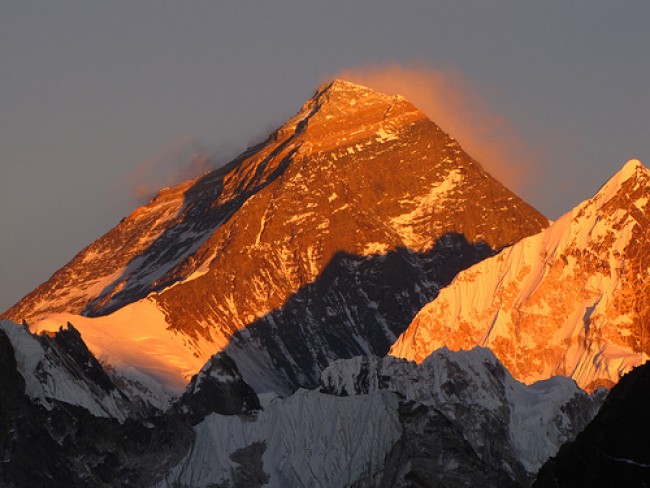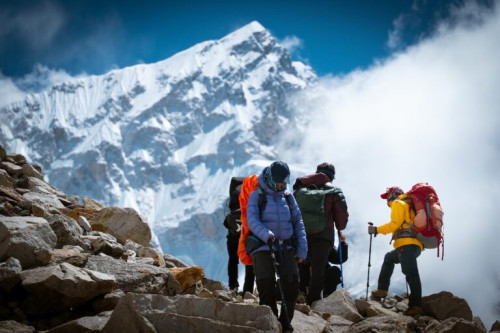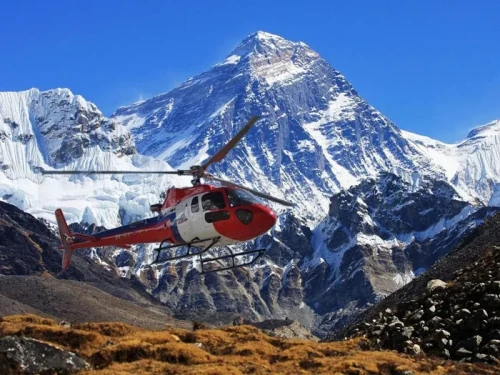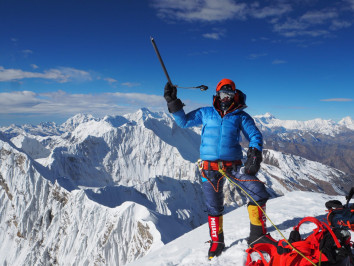Is Burj Khalifa taller than Mount Everest?

 Kedar Neupane
18th Nov, 2025
Kedar Neupane
18th Nov, 2025
Kedar Neupane
I am Kedar Neupane, a passionate traveler, entrepreneur, mentor, and social contributor, born and raised in a village near the Nepal-China border in Sindhupalchok, Nepal. With a Master’s degree in Business from Tribhuvan University and Level 2 proficiency in the German language, I have dedicated my life to tourism, trade, mentorship, and holistic well-being.
🌍 A Global Explorer with a Vision
Having explored 26+ countries, I have gained profound insights into diverse cultures, business landscapes, and global tourism. My travels have taken me to:
🇹🇭 Thailand | 🇧🇹 Bhutan | 🇲🇾 Malaysia | 🇸🇬 Singapore | 🇨🇳 China | 🇭🇰 Hong Kong | 🇩🇪 Germany | 🇵🇱 Poland | 🇦🇹 Austria | 🇨🇭 Switzerland | 🇭🇺 Hungary | 🇳🇱 Netherlands | 🇧🇪 Belgium | 🇫🇷 France | 🇦🇪 UAE | 🇬🇧 UK | 🇺🇸 USA | 🇹🇷 Turkey | 🇶🇦 Qatar | 🇮🇳 India | 🇮🇩 Indonesia | 🇨🇦 Canada
Through my journeys, I have developed a deep appreciation for cultural exchange, adventure tourism, and sustainable business practices.
🏔️ Entrepreneurial & Professional Journey
I am actively involved in tourism, trade, and mentorship, leading multiple ventures that promote sustainable travel, adventure tourism, and business development:
✔ Founder & MD – Actual Adventure Pvt. Ltd. (A leading adventure travel company in Nepal)
✔ CEO – Himalayas Destination Management Company (Creating premium travel experiences)
✔ MD – Nepal Export & Import Pvt. Ltd. (Promoting Nepalese products globally)
✔ MD – Actual Mentor Pvt. Ltd. (Empowering entrepreneurs and professionals)
✔ Chairman – World Expedition Nepal (Focusing on high-altitude expeditions and trekking)
Through my entrepreneurial journey, social contributions, global explorations, and commitment to lifelong learning, I strive to inspire others to pursue their passions while making a meaningful difference. My dream is to build a world where travel, business, and holistic well-being come together, fostering growth, sustainability, and happiness for all.
Is Burj Khalifa taller than Mount Everest?
The question of whether humans could ever build something taller than Mount Everest brings together the worlds of engineering, geology, and imagination. Mount Everest, rising to 8,848.86 meters above sea level, is the highest point on Earth and an extraordinary creation of nature. Formed over millions of years through the collision of the Indian and Eurasian tectonic plates, Everest dwarfs even the tallest human-made structure. The Burj Khalifa in Dubai, the tallest building ever constructed, stands at 828 meters—only about one-tenth of Everest’s height. This comparison alone shows how massive Everest truly is and how limited our current construction abilities are.
Table of Contents
Building a structure taller than Everest would require levels of technology and materials far beyond anything humanity has ever developed. At altitudes above 8,000 meters, air pressure is dangerously low, oxygen is scarce, and temperatures are brutally cold. Wind speeds can become severe enough to tear apart conventional structures. Even mountaineers require weeks of acclimatization to survive in the “death zone,” so constructing and maintaining a building at that height would be nearly impossible. Additionally, the foundation needed to support an 8-kilometer-tall building would have to be enormous—several kilometers wide—and placed on perfectly stable land, something that simply does not exist in modern urban environments. Economically, such a project would cost trillions of dollars with no practical purpose, making it unrealistic even if the engineering challenges were solved.
On the other hand, many people wonder why Everest’s height appears differently in various books, websites, or older records. The reason is that Everest’s height has been measured several times using different tools and methods, and the mountain itself is constantly changing. In the past, surveyors used trigonometric calculations from great distances to estimate the height. Today, modern technology like GPS receivers, satellite data, and ground-penetrating radar allow for far more precise measurements. These advancements led Nepal and China to conduct a joint study, and in 2020 they officially announced the most accurate height to date: 8,848.86 meters.
Everest’s height can also vary slightly because the summit is covered by snow and ice that changes with weather and seasons. Some measurements include the snow cap, while others measure down to the bare rock, which leads to small differences in reported heights. Tectonic activity also plays a role—Everest continues to rise slowly each year as the tectonic plates push together. Earthquakes, like the 2015 Gorkha earthquake in Nepal, can also alter the mountain’s shape or height slightly, which is why re-measuring becomes important after major seismic events.
In the end, comparing Everest with human-made structures highlights two completely different kinds of greatness. Human engineering has produced incredible achievements like the Burj Khalifa, but nature’s power—expressed through the colossal rise of Everest—exists on a scale that remains beyond our reach. Everest stands as a symbol of natural majesty, adventure, and challenge, while skyscrapers represent human ambition and innovation. Together, they tell a story of what the Earth creates over millions of years versus what humanity can achieve within decades.
Two giants: one man-made, one made by Earth
On one side we have the Burj Khalifa — an architectural skyscraper marvel in Dubai. On the other is Mount Everest — the Earth’s highest point above sea level. They both make us look up, but they play very different games.
Burj Khalifa (Dubai)
Height: 828 metres (architectural height) — tip-to-tip is often quoted as ~830 metres.
Opened in 2010, the Burj Khalifa is the tallest building and freestanding structure ever built by people. It houses offices, residences, restaurants, and observation decks that make the city feel small from the top. :contentReference[oaicite:1]{index=1}
Mount Everest (Nepal / China)
Height: 8,848.86 metres (29,031.69 feet) — the jointly announced official height from Nepal and China (2020 measurement).
Everest isn’t a building — it’s a mountain formed by tectonic collisions and shaped by ice and weather. It’s the highest point above mean sea level on Earth, and reaching its summit has been a dream (and challenge) for thousands of climbers. :contentReference[oaicite:2]{index=2}
Numbers that settle it
Let’s put the two heights side-by-side in clear numbers:
| Feature | Height |
|---|---|
| Burj Khalifa (architectural) | 828 m (≈2,717 ft). :contentReference[oaicite:3]{index=3} |
| Mount Everest (official, 2020) | 8,848.86 m (≈29,031.69 ft). :contentReference[oaicite:4]{index=4} |
Conclusion: Mount Everest is roughly ten times taller than the Burj Khalifa. So no — the Burj Khalifa is not taller than Everest.
But wait — a few fun twists to the question
- Relative height vs. absolute height: Burj Khalifa's height is measured from its base to tip. Everest's height is measured above sea level. If you measured from the ocean floor, the tallest mountain on Earth would be Mauna Kea (Hawaii) — most of it sits underwater. (That’s a different competition.)
- Human achievement vs. geological time: Burj Khalifa took years and billions of dollars to build. Everest took millions of years of plate tectonics to form.
- Which is more extreme to 'stand on top of'? Standing on the Burj’s observation deck is a dizzying modern thrill with elevators and glass — climbing Everest is a multi-week, high-risk expedition above 8,000 metres with thin air, crevasses, and weather that can change in minutes.
- Records that matter: Burj Khalifa holds records for man-made structures. Everest holds the record for the highest point above sea level. Both are records — just in different categories.
Frequently Asked Questions
Q: Could humans ever build something taller than Mount Everest?
A: In theory, yes — but in reality, it is extremely unlikely with today’s engineering and materials.
To build a structure taller than 8,848.86 metres, humans would face challenges on a scale we have never seen before:
- 1. Extreme Wind Load: At 8 km altitude, wind speeds can exceed 200 km/h, generating enormous lateral forces. Even modern skyscrapers would twist and fail under such pressure.
- 2. Material Limitations: Current building materials like steel and concrete do not have the strength-to-weight ratio needed for an 8 km tall tower. Even futuristic concepts remain theoretical.
- 3. Foundation Requirements: A structure this tall would need a base spanning several kilometers to distribute the immense weight. Finding land and geological stability for such a foundation is nearly impossible.
- 4. Low Air Pressure & Oxygen Issues: At Everest-like heights, the air is dangerously thin. Construction workers would need oxygen support and acclimatization — similar to climbing the mountain itself.
- 5. Elevator & Transport Limits: No current elevator system can travel 8–9 km vertically. Cables would be too heavy, motors insufficient, and travel time impractical.
- 6. Economic Impossibility: Even if technologically feasible, the cost would be in the trillions. No government or private entity could justify the expense.
Conclusion: While theoretically possible, building something taller than Everest is far beyond current human capability. Everest remains the highest point on Earth that humans can stand on.
Q: Why do some sources quote slightly different heights for Mount Everest?
A: Everest’s height has been measured many times using different technologies, and the mountain itself changes over time. These factors cause slight variations in reported height.
- 1. Snow & Ice Thickness: Everest’s summit is covered with snow that varies seasonally. Some surveys measured the snow cap, others measured the rock beneath it.
- 2. Improved Surveying Tools: Earlier measurements used trigonometry from distant points. Modern surveys use GPS, radar, and satellite data, giving more accurate results.
- 3. Tectonic Movement: Everest continues to rise slowly each year due to the Indian and Eurasian plates colliding. This gradual uplift causes height differences over decades.
- 4. Earthquake Effects: Major earthquakes, such as the 2015 Nepal earthquake, can shift the earth’s crust, affecting Everest’s height slightly.
- 5. Different National Surveys: Nepal and China historically conducted independent measurements using different methods. These differences led to slightly different results in the past.
- 6. Sea Level Variations: Everest’s height is measured above mean sea level — but sea level varies globally due to gravity and ocean patterns, causing measurement variations.
Conclusion: Because of snow changes, tectonic movement, earthquakes, and better technology, Everest’s height has varied across sources. The most widely accepted official height today is 8,848.86 meters, announced jointly by Nepal and China in 2020.
Asking "Is Burj Khalifa taller than Mount Everest?" is a playful way to compare human ambition with nature’s grandeur. One is an astonishing product of human design and daring; the other is a majestic testament to Earth’s power and time. Both deserve awe — just for very different reasons.
Written with curiosity — if you want, I can make a printable infographic or social post-sized image summarizing the comparison.
Recent Posts

18th Nov, 2025

14th Nov, 2025

12th Nov, 2025

28th Oct, 2025

19th Oct, 2025

18th Oct, 2025

14th Oct, 2025

14th Oct, 2025

















